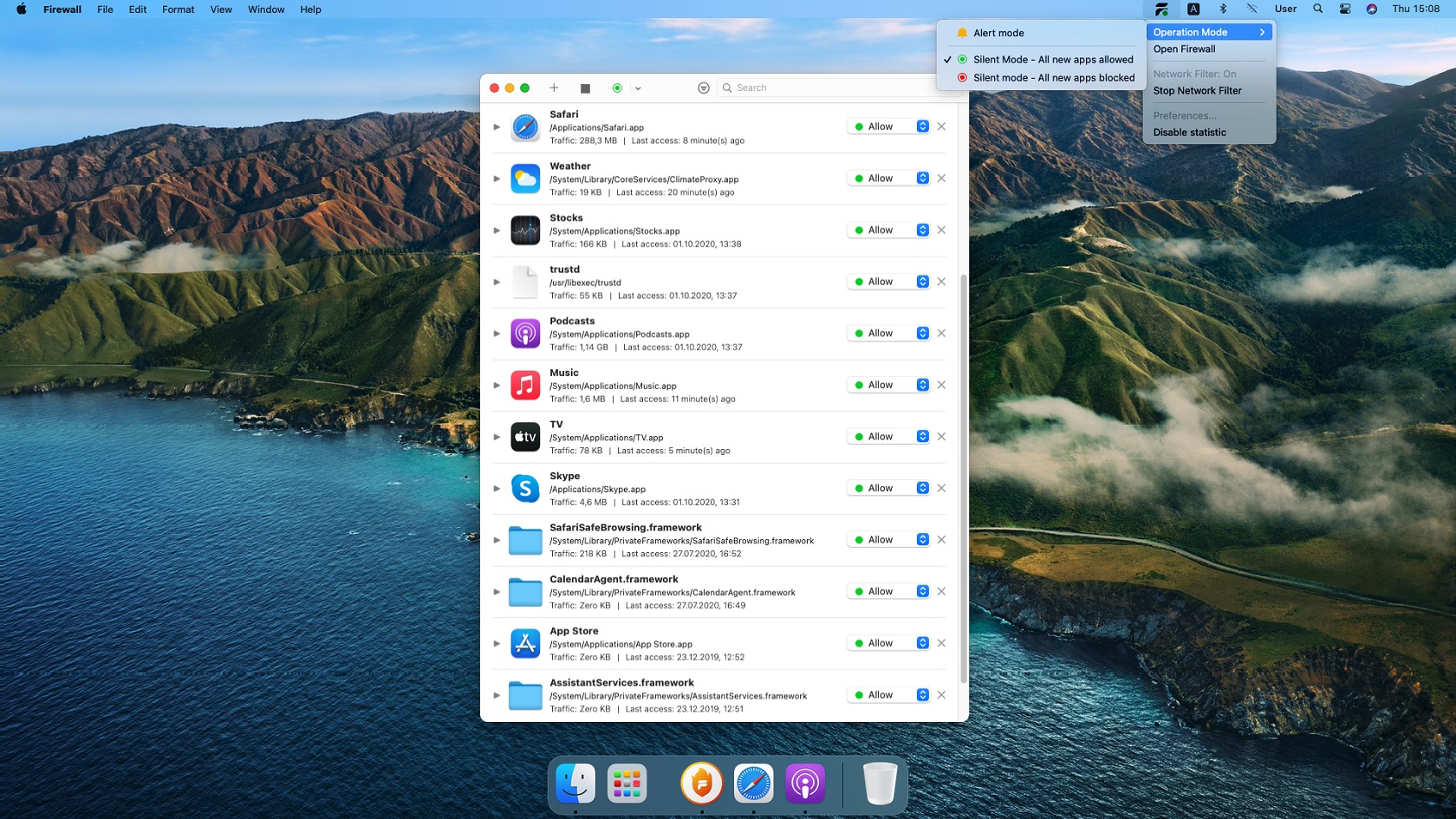How To Use RemoteIoT Behind Firewall On Mac Without Stressing Out
Hey there, tech-savvy friend! Let’s dive into something that might just save your day—or at least your productivity. Using RemoteIoT behind a firewall on Mac can seem like a daunting task, but trust me, it’s totally doable with the right approach. Picture this: you’re stuck at home, your office network is locked down tighter than Fort Knox, and you still need to access those IoT devices remotely. Sounds frustrating, right? But don’t panic—this guide has got your back. We’ll break it down step by step, so even if you’re not a networking wizard, you’ll feel like one by the end of this article.
Now, before we dive deep into the nitty-gritty, let’s address the elephant in the room. A firewall is like a super-strict bouncer at a club. It decides who gets in and who doesn’t, and sometimes it blocks exactly what you need to get your job done. But fear not, because we’re about to show you how to navigate through that bouncer without breaking any rules. Whether you’re managing smart home devices, industrial sensors, or anything IoT-related, this guide will help you stay connected without compromising security.
And hey, we get it—tech jargon can be overwhelming. So, we’ll keep things simple, conversational, and packed with actionable tips. By the time you’re done reading, you’ll have a solid understanding of how to use RemoteIoT behind a firewall on your Mac. Ready? Let’s roll!
Read also:Matthew Ansara The Rising Star Whorsquos Making Waves In The Entertainment World
Table of Contents
- Understanding Firewalls and Why They Exist
- What is RemoteIoT, Anyway?
- Setting Up Your Mac for RemoteIoT Access
- Common Challenges with Firewalls
- Port Forwarding: Your Secret Weapon
- Using a VPN for Secure Connections
- Exploring Cloud-Based Solutions
- Top Security Tips for RemoteIoT
- Troubleshooting Common Issues
- Final Thoughts and Next Steps
Understanding Firewalls and Why They Exist
Alright, let’s start with the basics. What exactly is a firewall? Think of it as a digital guardian that monitors all incoming and outgoing traffic on your network. It’s designed to keep unwanted visitors out while letting legitimate connections in. Firewalls are crucial for maintaining security, especially in corporate environments where sensitive data is involved.
But here’s the thing—firewalls can sometimes block legitimate traffic, especially when you’re trying to access remote devices. This is where things get tricky. If you’re working with IoT devices, you’ll need to find a way to bypass the firewall without compromising security. And that’s exactly what we’re going to cover in this guide.
Types of Firewalls
There are different types of firewalls, each with its own strengths and weaknesses. Here’s a quick rundown:
- Packet Filtering Firewalls: These inspect individual packets of data and decide whether to allow or block them based on predefined rules.
- Stateful Inspection Firewalls: These track active connections and only allow traffic that matches established sessions.
- Application-Level Gateways: Also known as proxy firewalls, these act as intermediaries between your network and the internet.
Knowing which type of firewall you’re dealing with can help you tailor your approach for accessing RemoteIoT devices.
What is RemoteIoT, Anyway?
Before we move forward, let’s clarify what RemoteIoT actually means. RemoteIoT refers to the ability to access and manage IoT devices from a remote location. Whether you’re controlling smart home gadgets, monitoring industrial sensors, or managing any other connected device, RemoteIoT makes it possible to do so without being physically present.
But why is this important? Well, in today’s fast-paced world, being able to manage IoT devices remotely can save you time, money, and a lot of headaches. Imagine being able to troubleshoot a sensor issue from the comfort of your couch instead of driving to the office. Sounds pretty sweet, right?
Read also:Brian Peck Related To Josh Peck The Untold Connection
Benefits of Using RemoteIoT
Here are some of the key benefits of using RemoteIoT:
- Increased Efficiency: You can manage multiple devices from a single location.
- Cost Savings: No need for on-site visits unless absolutely necessary.
- Improved Security: With the right setup, you can ensure that your devices are always secure, even when accessed remotely.
Setting Up Your Mac for RemoteIoT Access
Now that we’ve covered the basics, let’s talk about setting up your Mac for RemoteIoT access. The good news is that macOS comes with a bunch of built-in tools that can help you connect to remote devices. The bad news? It’s not always straightforward, especially when you’re dealing with firewalls.
Here’s a step-by-step guide to get you started:
- Check Your Network Configuration: Make sure your Mac is connected to the same network as the IoT devices you want to access.
- Enable Remote Login: Go to System Preferences > Sharing and check the box for Remote Login. This allows SSH connections to your Mac.
- Install Necessary Software: Depending on your specific needs, you might need to install additional software like SSH clients or IoT management platforms.
Once you’ve completed these steps, you’ll be ready to tackle the firewall challenge.
Tips for a Smooth Setup
Here are a few tips to ensure a smooth setup process:
- Double-check your network settings to ensure everything is configured correctly.
- Make sure your Mac’s firewall settings allow incoming connections for the tools you’re using.
- Test your setup before diving into more complex configurations.
Common Challenges with Firewalls
Let’s face it—firewalls can be a pain in the neck. They’re designed to keep things secure, but sometimes they end up blocking exactly what you need. Here are some common challenges you might encounter when trying to access RemoteIoT devices behind a firewall:
- Blocked Ports: Firewalls often block certain ports that are necessary for remote access.
- Network Restrictions: Some networks have strict rules about which devices can connect and from where.
- Authentication Issues: If your firewall requires specific authentication protocols, you might run into trouble if your devices don’t support them.
Don’t worry—we’ll show you how to overcome these challenges in the next sections.
Port Forwarding: Your Secret Weapon
One of the most effective ways to access RemoteIoT devices behind a firewall is through port forwarding. This technique allows you to direct incoming traffic to specific devices on your network. Here’s how it works:
Let’s say you want to access a smart thermostat remotely. By configuring port forwarding on your router, you can direct incoming traffic on a specific port to the thermostat’s IP address. This way, even if the firewall blocks other traffic, it will allow connections to the thermostat.
How to Set Up Port Forwarding
Here’s a quick guide to setting up port forwarding:
- Access Your Router: Open a browser and enter your router’s IP address (usually something like 192.168.1.1).
- Login: Enter your router’s username and password. If you don’t know them, check the manual or contact your ISP.
- Find the Port Forwarding Section: This might be labeled as “Port Forwarding,” “Virtual Servers,” or something similar.
- Set Up Rules: Create a new rule by specifying the port number, protocol (TCP/UDP), and the IP address of the device you want to access.
And just like that, you’ve opened the door for remote access while keeping everything secure.
Using a VPN for Secure Connections
Another great option for accessing RemoteIoT devices behind a firewall is using a Virtual Private Network (VPN). A VPN creates a secure tunnel between your Mac and the network where your devices are located. This way, you can bypass firewall restrictions and access your devices as if you were on the same network.
There are plenty of VPN services out there, so how do you choose the right one? Here are a few things to consider:
- Security Features: Look for a VPN that offers strong encryption and secure protocols.
- Speed: You don’t want a VPN that slows down your connection, so make sure it’s fast and reliable.
- Compatibility: Ensure the VPN works well with macOS and supports the devices you want to access.
Exploring Cloud-Based Solutions
If setting up port forwarding or using a VPN seems too complicated, you might want to consider cloud-based solutions. These platforms allow you to manage your IoT devices remotely without worrying about firewalls or network configurations.
Some popular cloud-based IoT platforms include:
- Amazon Web Services IoT: Offers a comprehensive suite of tools for managing IoT devices.
- Microsoft Azure IoT Hub: Provides robust features for connecting, monitoring, and managing IoT devices.
- Google Cloud IoT Core: A scalable platform for building IoT solutions.
These platforms often come with built-in security features, making them a great choice for businesses and individuals alike.
Top Security Tips for RemoteIoT
When it comes to accessing RemoteIoT devices, security should always be a top priority. Here are some tips to keep your devices safe:
- Use Strong Passwords: Avoid using default passwords and make sure your credentials are strong and unique.
- Enable Two-Factor Authentication: Add an extra layer of security by requiring a second form of verification.
- Keep Software Up to Date: Regularly update your devices and software to patch any security vulnerabilities.
By following these tips, you can ensure that your RemoteIoT setup is as secure as possible.
Troubleshooting Common Issues
Even with the best setup, things can still go wrong. Here are some common issues you might encounter and how to fix them:
- Connection Issues: Double-check your network settings and ensure that all devices are properly configured.
- Firewall Blocks: Adjust your firewall rules to allow the necessary traffic.
- Device Compatibility: Make sure your devices are compatible with the tools and platforms you’re using.
If you’re still having trouble, don’t hesitate to reach out to the support teams of the platforms or devices you’re using.
Final Thoughts and Next Steps
And there you have it—a comprehensive guide to using RemoteIoT behind a firewall on your Mac. Whether you choose to use port forwarding, a VPN, or a cloud-based solution, there are plenty of ways to stay connected to your IoT devices without compromising security.
Remember, the key to success is preparation and patience. Take the time to set up your system properly, and don’t be afraid to experiment with different approaches until you find what works best for you.
Now it’s your turn! Share your thoughts in the comments below. Have you tried any of these methods? What worked for you? And don’t forget to check out our other articles for more tech tips and tricks. Happy connecting!
Article Recommendations


